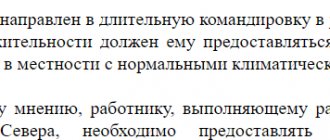A part-time worker is attracted to a position that does not require full-time work. In case of combination, which is often found among teachers at universities, the employee performs duties during his main job. There is also another form - part-time work. It differs in that duties are performed in free time. In this case, the calculation is carried out under a separate employment contract.
The essence of part-time work
Part-time work is the implementation of a labor function in several positions at once. If an employee works in both specialties for the same manager, this is internal combination, if in different professions it is external.
The main place of work is considered to be the organization where the employee spends most of his time and where his work document is located.
An employee spends much less time in a dual position.
Most often, a person gets a second job at 0.5 times the salary. At the same time, he is entitled to no less and no more vacation days than at his main place of work.
The norms of labor legislation establish the specifics of registering rest days at both places of employment, as well as the payment of compensation for their failure to provide them.
Legislation governing the provision of part-time leave
In their free time from work that takes up more time, employees have the right to engage in any activity, including work. This is enshrined in Chapter 44 of the Code.
It also stipulates that the contract must contain a clause providing the employee with paid leave every year.
Payment for work performed on a part-time basis is carried out in accordance with the norms of Article 285 of the Russian Labor Code, and the provision of leave to such employees is carried out in accordance with the norms of Article 286 of the Code. The procedure for paying amounts for annual vacation is discussed in the nineteenth chapter of the Labor Code of the Russian Federation.
Rules for granting leave to part-time workers
Having analyzed the norms of Russian labor legislation concerning the combination of the main place of employment with an additional one, we can identify a number of theses that address the issues of formalizing the procedure for providing days of rest to persons combining two positions:
- Paid annual rest days, which are financed by the employer, must be provided simultaneously in all official places of employment. You cannot work at one job while relaxing at another (unless the employee wishes to do so).
- An employer who employs a person in a part-time position does not have the right to refuse to provide him with leave during the period when the employee is given days of continuous rest at the place where the person works more time.
- To take leave in a combined position, you do not need to comply with the six-month period of work. If the time for an annual vacation has come for an employee at his main job, the second place of employment must also provide him with vacation, even if it is accrued in advance.
- If we are talking about internal combination, such an employee also receives leave for his two positions.
If, due to internal or external combinations, scheduled vacations are scheduled for the additional and main places of work at different times, the employer is obliged to allow the employee to rest in one period (focusing on the main place of work).
Payment of benefits to a part-time employee
In accordance with Art. 287 of the Labor Code of the Russian Federation, part-time workers have the right to receive all guarantees and compensation provided for by current legislation, collective agreements and local regulations of institutions.
If necessary, a part-time worker is entitled to benefits for temporary disability and in connection with maternity, which are assigned and paid in accordance with the generally established procedure. So, paragraph 2 of Art. 13 of Federal Law No. 255-FZ [2] determines that if the insured person is employed by several policyholders at the time of the insured event and was employed by the same policyholders in the two previous calendar years, then he is assigned and paid:
- benefits for temporary disability, pregnancy and childbirth - by policyholders for all places of work (service, other activities);
- monthly child care benefit - the insured for one place of work (service, other activity) at the choice of the insured person.
These benefits are calculated based on average earnings, determined in accordance with Art. 14 of this law.
Please note that, by virtue of Part 2 of Art. 13 , part 1 art. 14 of Federal Law No. 255-FZ, to calculate the average earnings of part-time workers, earnings are taken into account only at the place of work where the benefit will be assigned. In this case, the average earnings during part-time work with another employer are not taken into account if temporary disability benefits are paid for all places of work.
The basis for payment of temporary disability benefits is a temporary disability certificate for each place of work. By virtue of clause 4 of Order No. 624n [3], if a citizen at the time of temporary disability, maternity leave is employed by several employers and in the two previous calendar years before the issuance of sick leave was employed by the same employers, he is issued several certificates of incapacity for work for each place of work.
To calculate benefits, the payment of which is carried out at the expense of the Social Insurance Fund, you must remember the following:
- the calculation period is two years preceding the year of the onset of temporary disability ( clause 1, part 2 , part 1, article 14 of Federal Law No. 255-FZ );
- The average earnings include payments in favor of the insured person, for which insurance premiums are calculated in accordance with Federal Law No. 212-FZ [4] ( clause 6, part 1, article 1.2 , part 2, article 14 of Federal Law No. 255-FZ );
- the number of calendar days into which average earnings are divided is 730 ( Part 3, Article 14 of Federal Law No. 255-FZ ).
the maximum base for calculating insurance contributions to the Social Insurance Fund established on the basis of Federal Law No. 212-FZ Moreover, if the appointment and payment of benefits to the insured person are carried out by several insurers, then the average earnings, on the basis of which the benefits are calculated, are taken into account for each calendar year in an amount not exceeding the maximum amount when calculating benefits for each of these insurers ( Part 3.2 of Article 14 Federal Law No. 255-FZ ).
The size of the maximum base, taking into account indexation for 2014, is 624,000 rubles. ( Resolution of the Government of the Russian Federation dated November 30, 2013 No. 1101 ), and for 2013 - 568,000 rubles. ( Resolution of the Government of the Russian Federation dated December 10, 2012 No. 1276 ).
Example 2.
Let’s assume that external part-time worker L.A. Petrova, working as a cleaner in a budgetary educational institution, fell ill in September 2015. A certificate of incapacity for work was issued for five days. Her average earnings for the billing period (from January 1, 2013 to December 31, 2014) amounted to 110,000 rubles. Insurance experience – 10 years. Payment for sick leave is carried out according to activity code 2 “Income-generating activities”. Benefits are paid for all places of work without submitting certificates from other employers. Benefits are issued through the cash desk.
We will calculate the amount of temporary disability benefits.
The average earnings for calculating temporary disability benefits cannot be less than the minimum wage ( Part 1.1, Article 14 of Federal Law No. 255-FZ ). Therefore, if the insured person had no earnings during the billing period or the average earnings calculated for these periods, calculated for a full calendar month, are lower than the minimum wage established by federal law on the day the insured event occurred, then the average earnings for calculating benefits are taken equal to the minimum wage provided for by federal law on day of occurrence of the insured event.
From January 1, 2015, the minimum wage is 5,965 rubles.
The average daily earnings in this case will be 150.68 rubles. (RUB 110,000 / 730 cal days).
Let's determine the amount of average daily earnings based on the minimum wage. It will be 196.11 rubles. (RUB 5,965 x 24 months / 730 cal days).
The amount of temporary disability benefits will be equal to 980.55 rubles. (RUB 196.11 x 5 cal days). At the expense of the Social Insurance Fund, 392.22 rubles were accrued, at the expense of the employer - 588.33 rubles.
In the accounting records of the institution, in accordance with Instruction No. 174n [5], the following entries were made:
| Contents of operation | Debit | Credit | Amount, rub. |
| Temporary disability benefits accrued at the expense of the employer | 2 109 60 211 | 2 302 11 730 | 588,33 |
| Temporary disability benefits accrued at the expense of the Social Insurance Fund | 2 303 02 830 | 2 302 13 730 | 392,22 |
| Personal income tax was withheld from the amount of accrued benefits (RUB 588.33 x 13%) (RUB 392.22 x 13%) | 2 302 11 830 2 302 13 830 | 2 303 01 730 2 303 01 730 | 76 51 |
| The amount of temporary disability benefits to the employee was issued from the cash register | 2 302 11 830 2 302 13 830 | 2 201 34 610 2 201 34 610 | 512,33 341,22 |
Duration of paid days of continuous rest
According to Russian legislation, the minimum period of paid leave each year is twenty-eight days.
This period of time for rest should be provided both at the main place of work and at the additional one, despite the fact that in the second case the employee spends much less time in the organization.
Due to the fact that in all combined positions the vacation period must coincide, the discrepancy between these indicators can be compensated.
Consider the following cases:
- In the main position, the employee is granted an extended type of leave, and in a combined position - the usual twenty-eight days (for example, for teachers). In this case, at the place of part-time work, at the employee’s request, he is required to provide him with additional days of rest as a period of unpaid leave. To receive these days, the employee must provide the employer with a certificate from his place of work about the vacation, a copy of the order or vacation schedule.
- At the main job, the employee has the right to receive a longer vacation in addition to the basic one (for example, people working in hazardous conditions, with children, disabled people). The same right remains with the employee during combination. Therefore, the employer is obliged to let him rest for the entire required time.
- At a part-time job, there is more vacation than at the main job. In this case, the employee can return to work when the shorter vacation ends. In this case, the unused rest period must be compensated financially by the employer.
Part-time work is the performance by an employee, in his free time from his main job, of paid work for the same (internal part-time job) or for another employer(s) (external part-time job) under the terms of another employment contract (part one of Article 343 of the Labor Code of the Republic of Belarus; further – TK). An employee has the right to work part-time under several employment contracts. Part-time workers have the right to leave, and such employees are granted leave simultaneously with leave for their main job. If the duration of the employee’s leave at a part-time job is less than the duration of the leave at the main place of work, the employer, at the request of the employee, provides him with social leave of the appropriate duration without pay. Part of the part-time worker's leave, which exceeds the leave for the main job, can be replaced by monetary compensation by agreement between the employee and the employer.
Example 1
The right of a part-time worker to work leave
An employee of the organization (main place of work) wrote an application for granting him leave from August 5, 2021 for the period of work from July 10, 2021 to July 9, 2021. From April 14, 2021, an employment contract was also concluded with the employee for work on part-time.
The organization has the right to grant the employee labor leave despite the fact that the duration of part-time work is less than 6 months: if the employee has not worked at a part-time job for 6 months, then labor leave is provided in advance (part two of Article 347 of the Labor Code).
As a general rule, vacation pay is calculated based on average daily earnings. Average daily earnings are determined by dividing the wages actually accrued to the employee for the months taken into account by the number of these months and by the average monthly number of calendar days equal to 29.7 (calculated on average over 5 years) (clause 6 of the Instructions on the procedure for calculating average earnings , approved by Resolution of the Ministry of Labor of the Republic of Belarus dated April 10, 2000 No. 47; hereinafter referred to as Instruction No. 47).
Average earnings saved during labor (main and additional) leave are calculated based on wages accrued for 12 calendar months (from the 1st to the 1st day) preceding the month the leave began, regardless of which working year it is provided (clause 5 of Instruction No. 47).
Example 2
Period accepted for calculation
An employee of the organization was granted leave for his main job and part-time job of 25 calendar days from July 29, 2021 for the period of work from January 12, 2021 to January 11, 2019.
To calculate the average daily earnings, wages accrued during the period from July 1, 2021 to June 30, 2021 are accepted.
For part-time workers, vacation pay is accrued separately at the main place of work and at a part-time job (clause 4 of Instruction No. 47), while the calculation of vacation pay includes payments included in the List of payments taken into account when calculating average earnings (appendix to Instruction No. 47).
Example 3
Calculation of vacation pay for the main place and part-time jobs separately
An employee of the organization was granted a leave of absence for his main job and part-time job for 25 calendar days from July 29. The earnings actually accrued to the employee for the period from July 1, 2021 to June 30, 2021 are: for the main job - 12,545 rubles, for part-time work - 4,554 rubles.
The employee's vacation pay at his main place of work is 879.98 rubles. ((12,545 / 12 / 29.7) × 25), for part-time work - 319.44 rubles. ((4,554 / 12 / 29.7) × 25). The total amount of vacation pay accrued to the employee is RUB 1,199.42. (879.98 + 319.44).
Example 4
Payments taken into account when calculating average earnings
An employee of the organization was granted a leave of absence for his main job and part-time job lasting 26 calendar days from August 12, 2021. The calculation data is given in table. 1.
Table 1
(rub.)
Average daily earnings:
– at the main place of work – 30.71 rubles. (10,946.14 / 12 / 29.7);
– part-time – 10.10 rubles. (2,100.00 / 7 / 29.7).
The amount of vacation pay will be:
– at the main place of work – 798.46 rubles. (30.71 × 26);
– part-time – 262.60 rubles. (10.10 × 26).
The total amount of vacation pay will be 1,061.06 rubles. (798.46 + 262.60).
If in the period for which payments are made on the basis of average earnings, the organization increased tariff rates (salaries) of employees or tariff rates of the 1st category, based on which tariff rates (salaries) of employees are calculated, then the average salary for the period preceding the increase , is calculated using correction factors (clause 31 of Instruction No. 47). Adjustment factors are calculated by dividing the tariff rate (salary) established in the month in which payments based on average earnings take place by its size in effect in the months taken for calculating earnings.
Example 5
Adjusting wages to calculate average daily earnings
An employee of the organization is provided simultaneously with the main place of work and internal part-time work with a regular leave of 25 calendar days from July 29, 2021. In the period adopted for calculating average earnings, the organization increased the tariff salary twice: in October 2021 and in January 2019 G.
Data for the calculation in the period taken to calculate average earnings are given in table. 2.
table 2
(rub.)
We will make calculations for the main place of work, taking into account correction factors (see Table 3).
Table 3
At main place of work:
– average earnings are 33.67 rubles. (12,000.06 / 12 / 29.7);
– amount of vacation pay – 841.75 rubles. (33.67 × 25).
Vacation pay for internal part-time work is calculated in the same way (see Table 4).
Table 4
At the same time:
– average earnings are 10.61 rubles. (2,205.00 / 7 / 29.7);
– the amount of vacation pay is 265.25 rubles. (RUB 10.61 × 25).
Thus, the employee must be paid vacation pay in the amount of 1,107 rubles. (841.75 + 265.25).
Vacation pay for part-time workers
Leave for all categories of employees (at their main and additional places of work) is paid according to the norms of the same articles of the Labor Code.
The accrued amount is calculated based on the average salary of the employee.
In this regard, despite the same number of days of rest, their payment will be different. This is due to the fact that part-time employees have fewer hours to work.
If vacation was provided and paid to the employee in advance to equalize the days of rest at both places of employment, in the event of early dismissal, this money will be forcibly recovered from the employee.
The payment terms for vacation pay at the main and additional places of work are the same - three days before the start of the rest period.
Calculation algorithm
Payment to a part-time worker is calculated in the same way as to main employees. Vacation pay is issued no later than three days before the start of the vacation.
- Determine the total earnings for the billing period. In addition to wages, this includes all allowances, bonuses, and coefficients. Payments for sick leave, travel allowances, financial assistance, compensation transfers and benefits not subject to insurance contributions are not included in the calculation of total earnings.
- Indicate the scope of the billing period. In most cases it lasts 12 months.
- Calculate average daily earnings. If all months are worked in full, the total amount received for the billing period is divided by 12 and by a factor of 29.3. It reflects the average number of days in a month.
In practice, there are more often cases when the billing period has not been fully worked out. Here, days worked are calculated using different formulas. First, their number is multiplied by a factor of 29.3, the resulting product is divided by the number of calendar days in this month. In this way, the calculated days are calculated in each month that is not fully worked. The number of full months is multiplied by 29.3. All these values are added up and the total number of days in the billing period is obtained.
- To calculate vacation pay, the number of rest days (usually 28) is multiplied by the average daily wage.
Other types of leave for part-time employees
In addition to annual rest days, which the employer must pay on time, Russian labor legislation contains instructions for other types of leave, both for persons combining two positions and for key employees.
The first type of leave is maternity leave. It cannot be transferred to another period, therefore it is provided simultaneously at all places of employment.
It is issued on the basis of a sick leave certificate, which confirms the fact of pregnancy and its duration.
The employer is obliged to allow the employee to go on maternity leave at the thirtieth week.
At the same time, payments that are due to an employee in connection with pregnancy and at the birth of a baby can only be processed by one of the employers.
To receive maternity payments, you must provide the employer with a certificate of two years of earnings in the place from which this money will be transferred to the employee.
The second type of leave is educational. According to the norms of Russian labor legislation, only the main employer is obliged to provide days of rest for the session.
The employee must continue to work at the additional job.
Otherwise, he can take leave at his own expense in a combined position.
Payment for training time is carried out by the employer for the main job.
If at an additional place of employment there are difficulties with attending classes, the employee can:
- take unpaid leave for several days;
- study on your days off or free hours;
- study according to a special schedule by agreement with the employer and the dean’s office of the educational institution.
Remuneration for a part-time employee
By virtue of Art. 132 of the Labor Code of the Russian Federation, the salary of each employee depends on his qualifications, the complexity of the work he performs, the quantity and quality of labor expended, and is not limited to the maximum amount. Similar instructions are contained in the Unified Recommendations for the establishment at the federal, regional and local levels of remuneration systems for employees of state and municipal institutions for 2015 , approved by the Decision of the Russian Tripartite Commission for the Regulation of Social and Labor Relations dated December 24, 2014 , Protocol No. 11.
As a general rule, established by Art. 284 of the Labor Code of the Russian Federation , the working hours of a part-time worker cannot be more than four hours a day. Thus, when accepting a part-time worker for a vacant position with a certain salary, the institution pays him, as an employee, half the standard working time, respectively, half the salary in accordance with Art. 285 Labor Code of the Russian Federation . Consequently, additional payments provided for in a fixed amount to the full official salary must be paid in proportion, that is, in the amount of 50% of the established amount. Paying more would discriminate against the work of other employees working in the institution in similar positions and receiving the same additional payment for the complexity and intensity of the work.
At the same time, the norms of Art. 285 of the Labor Code of the Russian Federation indicate payment of labor not only in proportion to the time worked, but also in accordance with the terms of the employment contract. And this, in turn, determines the independence of the parties to the employment contract in establishing the amount of additional payments. In other words, in the employment contract, the institution has the right to indicate a larger amount of additional payments, provided that it has the financial capacity to comply with these obligations. In practice, this is possible, as a rule, only at the expense of funds received by the institution from income-generating activities.
In particular, the remuneration of part-time teachers will depend on the teaching load assigned to them, which, in turn, depends on the number of hours according to the federal state educational standard, curriculum and programs, staffing levels and other specific conditions in a given educational institution. The distribution of the teaching load is carried out by the head of the educational institution. The volume of teaching load determined for a specific teacher is fixed in the employment contract.
In general, the salary of a part-time teacher will be calculated based on the cost of one teaching hour for a given employee, multiplied by the number of hours spent. And the cost of one teaching hour depends on the level of education, the availability of a qualification category, the length of teaching experience and the compensation and incentive payments established for this employee.
A similar approach is used when paying part-time doctors. When calculating their salary, a medical institution must take into account the qualification category, the presence of titles and academic degrees, compensation and incentive payments.
Let's consider an example of calculating wages for a part-time employee.
Example 1.
External part-time worker L.A. Ivanova, working as a nurse with an official salary of 5,100 rubles, worked in a dental clinic, which is an autonomous institution, in August 2015 for 75.6 hours (with a 36-hour work week). The employment contract stipulates that the employee’s remuneration is made in proportion to the time worked (Article 285 of the Labor Code of the Russian Federation). Additionally, the employee is provided with a bonus payment of 50% of the official salary. Payments are made from funds received from the provision of paid services.
Payment for hours actually worked by L. A. Ivanova in August 2015 will be 2,550 rubles. (RUB 5,100 / 151.2 hours x 75.6 hours).
The amount of the premium paid will be equal to 1,275 rubles. (RUB 2,550 x 50%).
The total amount of payments is 3,825 rubles. (2,550 + 1,275).
In the accounting records of the institution, in accordance with Instruction No. 183n [1], the following entries were made:
| Contents of operation | Debit | Credit | Amount, rub. |
| Employee's wages accrued | 2 109 60 211 | 2 302 11 000 | 3 825 |
| Insurance contributions to the Social Insurance Fund were accrued in case of temporary disability and in connection with maternity (RUB 3,825 x 2.9%) | 2 109 60 213 | 2 303 02 000 | 110,92 |
| Insurance premiums for compulsory social insurance against industrial accidents and occupational diseases have been calculated (RUB 3,825 x 0.2%) | 2 109 60 213 | 2 303 06 000 | 7,65 |
| Insurance premiums for compulsory medical insurance were charged to the Federal Compulsory Medical Insurance Fund (RUB 3,825 x 5.1%) | 2 109 60 213 | 2 303 07 000 | 195,08 |
| Insurance premiums for compulsory pension insurance have been calculated (RUB 3,825 x 22%) | 2 109 60 213 | 2 303 10 000 | 841,50 |
| Personal income tax withheld from the amount of accrued wages (RUB 3,825 x 13%)* | 2 302 11 000 | 2 303 01 000 | 497 |
| The employee's wages were issued from the cash register (3,825 - 497) rubles. | 2 302 11 000 | 2 201 34 000 | 3 328 |
Registration of vacations for part-time workers
Since vacations are provided to employees according to a schedule approved two weeks before the end of the current year, rest days for persons combining two positions are recorded as follows:
- If the main vacation period is known, this time is indicated in the schedule at the additional place of work.
- If the start date of rest from the main job is unknown, an empty space marked “part-time worker” remains in the schedule of the person combining two positions.
- Part-time employees of the internal type are indicated in two vacation sheets, but with one period of time.
Part-time leave must be granted to the employee on the same days as for the main job. If the periods of rest days do not coincide in duration, the issue must be resolved by agreement with the employer.
4 / 5 ( 1 voice )







